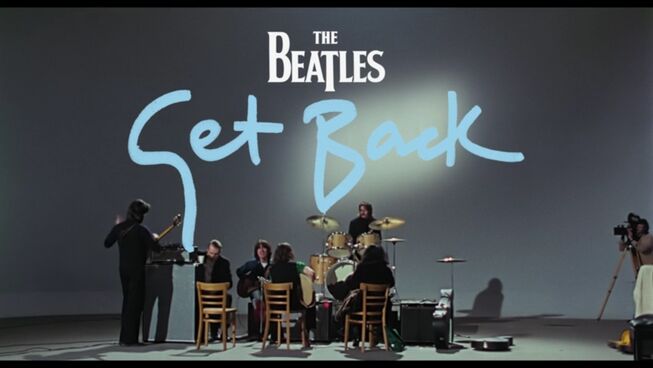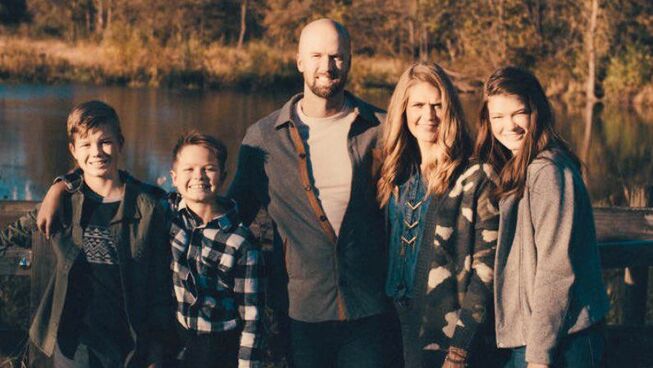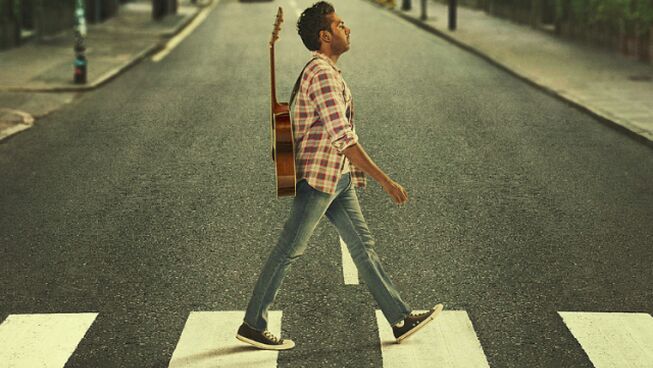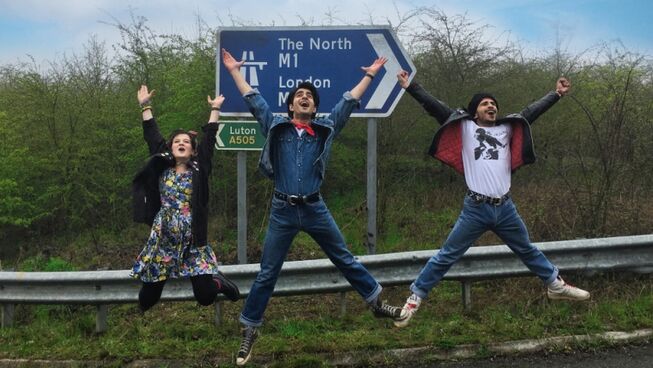
4 out of 5 stars
In 2017 Peter Jackson (Lord of the Rings), a lifelong Beatles fan, gained access to hundreds of hours of unused video and audio from Michael Lindsay-Hogg's 1970 documentary about the Beatles’ last studio album, Let It Be. The Academy Award-winning director and his team spent the last four years pouring over and piecing together the archived material. The same film restoration technology used to create Jackson’s stunning war documentary, They Shall Not Grow Old, was also employed in Get Back. The result is a captivating fly-on-the-wall experience that looks and feels like it was filmed last week.
Determined to give the Beatles one last chance before finally dissolving a year later, the four reunite in a London studio. It has been nearly two years after releasing the disappointing Magical Mystery Tour. This time, McCartney has arranged for a film crew to record them writing, rehearsing, and producing what will be the band’s last studio album and last public performance as the Beatles. The documentary film was released after their breakup in 1970 to mediocre reviews. Some critics panned the director for what they considered a condensed and joyless recounting of discord between the bandmates that led to the group’s demise. Although the project included the now legendary impromptu Concert on the Rooftop, the harsh critique left a mark on its legacy.
“The biggest break in my career was getting into the Beatles in 1962. The second biggest break since then is getting out of them.” - George Harrison
Upon arriving at Twickenham Studios in London the group is tasked with writing and rehearsing 14 new songs in 14 days. Will they collaborate in time to perform and record their new album before a live television audience? To accentuate the looming live concert deadline, Jackson marks the passing of each studio session by cutting to a calendar and crossing off the day with an X. We feel a sense of urgency and wonder why these four legendary musicians do not. It is fascinating to observe how the personalities repel and attract in a way that seems like marriage. John saunters in late for each rehearsal with Yoko underarm. He shrugs and seems content with improvising. On the other hand, Paul is eager to take over as boss. He owns the schedule and ensures ample time for rehearsal and songwriting. Ringo remains quietly ensconced behind his drums, yawns and waits patiently for something to play. It is well known that George grew resentful of John and Paul for not taking him seriously as a songwriter. He announces that he is leaving the band and abruptly walks out. Reflecting on George’s decision, John tells Paul, “We created a festering wound and didn't give him any bandages.” The three arrange for a private meeting with George and talk him into coming back.
During one particular rehearsal we catch a glimpse of the mythical ‘tortured genius.’ A visibly annoyed Paul McCartney picks up a guitar while gently rebuking John Lennon for being late to rehearsal. As of late, John’s concentration has been on Yoko, not songwriting and certainly not the Beatles. Paul begins to pick at the strings while humming into the microphone. At some point, the humming becomes a rhythmic and incoherent garble. Then after a few moments, the incoherent garble turns into lyric: ‘Jojo was a man who thought he was a loner. Get back, get back. Get back to where you once belonged.’ The classic line’s sudden appearance is mysterious, and the song’s formation is almost magical. One moment the lyric did not exist and the next moment it’s there - forever. We get glimpses of creative genius like this through hours of rehearsal footage despite four young musicians who are obviously exhausted from so-called Beatlemania. Then to add to the tension, each is coming to grips with their inevitable breakup. Years after the Fab Four’s disbandment George Harrison mused, “The biggest break in my career was getting into the Beatles in 1962. The second biggest break since then is getting out of them.”
Set aside the expensive furs and mythos surrounding Beatlemania. Put aside the mop tops, the floppy wizard hats, the psychedelic colours and what remains are four young friends from Liverpool who created timeless music that still makes people smile. After the band’s final public performance, George sighs and says, “There’ll be no more rooftops.” Except for Paul, everyone else seems to be relieved. A moment passes by before someone starts the playback and then there’s a shot of their feet tapping to the rhythm, all smiles. We know that any differences have been put aside for a moment to recognise and appreciate the beauty of their friendship within the mystery of the creative process.
Reel Dialogue: Dealing with the breakdown of relationships
One element of the series that stands out is the rejection that George Harrison felt within the Beatles. Interestingly, it is a pain that everyone experiences in life to a degree. What we see unfolding on the screen is played out in our day-to-day lives. This pain includes personal loss, which is not unlike bereavement. Sometimes the hurt is so great it prevents people from functioning properly and leads to the breakdown of relationships. While many will admit to the fact that the best cure is time. Still, one thing that the Christian faith offers is someone who understands this pain and even offers to “heal the broken-hearted and bind up their wounds” (Psalm 147:3).
Throughout his biographies, Jesus experiences the pain of rejection. “He came to his own, and his own people did not receive him” (John 1:11). Jesus was betrayed by one of His closest associates (John 6:71).
If you are going through the aftermath of a broken relationship, know that you can take your burdens to the Lord (1 Peter 5:7). Jesus is the one who weeps with those who weep (Romans 12:15), and He can understand your weaknesses. (Hebrews 4:15).







